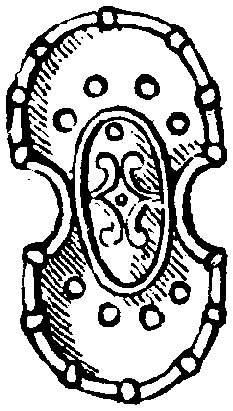Chapters
Numa Pompilius was born in 753 BCE He was the second legendary king of Rome, after Romulus. He was a Sabina native from the town of Cures. The emergence of most of Rome’s political and religious institutions is attributed to him. Ruled from 715 to 673 BCE
Plutarch claims that Numa was the youngest of Pomponius’ four sons, and he was born on April 21, 753 BCE, the day Rome was founded. From a young age, he was brought up in harsh and far-from-luxurious conditions. Titus Tatius, the legendary king of the Sabine city of Kures, gave Numa his only daughter Tatia as a wife. After 13 years of marriage, Tatia died and Numa moved to the provinces in mourning. According to Livius, Numa was in Kures just before assuming power in Rome. Both Plutarch and Livius refute the claim that Numa was educated in philosophy by Pythagoras himself (this is impossible in time).
Plutarch mentions that Numa had a daughter, Pompilia, whose mother was either Tatia’s first wife or Lucretia’s second. Pompilia was to marry the first pontifex maximus Numa Marcius and give him a son – the future king – Ancus Marcius. Other historians claim that Numa had five sons in addition to a daughter. They were Pompo (or Pomponius), Pinus, Calpus, Mamercus, and Numa. The noble families (gentes) were to come from them: Pomponia, Pinaria, Calpurnia, Aemilia, Pompilia. Some authors believe that the nobles merely referred to legendary sons in order to raise their rank. The nymph Egeria was also supposed to be the mistress/wife of Numa. Apparently, it was she who ordered him to carry out reforms in the city-state. She was the king’s adviser to whom, in a grove devoted to her later, next to the port of Capena in Rome, she advised on state and religious laws. After Numa’s death, in despair, she went to the sacred grove of Diana in Aricia, where she was turned by the goddess into a spring, which was later a place of her worship.
Reign
Following the death of Romulus, there was a seat on the throne for one year and power rested in the hands of the Senate, which changed every five days. In 715 BCE after quarrels between the Romulus (Romans) and Tacius (Sabine) factions, a compromise was reached, and Numa became the ruler of Rome. Plutarch mentions that the new king was clever and sensible. At first, Numa was to refuse. In order to convince him, his father, relatives, including the teacher and father of his son-in-law – Marcus, and two ambassadors from the Romans were sent for an interview. Plutarch and Livius mention that Numa was summoned from Cures to Rome by the Senate and received the insignia of power in the face of the cheering crowd. Numa, however, requested that augur consult the gods first about his future reign. The signs were favourable, proving Jupiter to support the new king.
According to Plutarch, the monarch’s first ordinance was to disband the 300 personal guards, called “Celeres,” which protected Romulus. This gesture is interpreted in various ways, but it can be considered a signal for the coming time of peace. One of his next orders was the commission to build the temple of Janus, the gates of which were closed in times of peace and opened in times of armed conflict so that troops could pass through the building and receive blessings. The building was erected on Argiletum road. The doors of the temple were locked throughout Numa’s reign.
Another belief ordinance was the introduction of the Terminus’ cult, the god of boundaries. By worshipping this deity, Numa achieved that the Romans respected the boundaries of their possessions and did not violate the law. Thus, during the reign of Numa, peace reigned. The ruler “civilized” the Romans, whose city-state grew up in the wars in Romulus’ day.
According to Roman legend, a plague broke out during the reign of Numa. Then an oval shield fell from the sky – Ancile – which was an ancient cult object. The appearance of the shield was connected with the prophecy that the duration and power of the Roman state would depend on its continued existence. On the advice of the prophetess of Egeria, to prevent theft or recognition, the king ordered that 11 exact copies of this shield be made. In historical times, they were kept in the temple of Mars under the care of its priests, known as chambers. Every year in March and October, they carried them in solemn processions organized in honour of the god Mars and performed an ancient war dance in full armour.
During the reign of Numa, the solar calendar was also reformed and the months of January and February were added. From then on, it was 354 days long, and there were to be leap months every 19 years. Unfortunately, there is not much information about this calendar. In addition, the king made a list of good days (dies fasti) and bad days (dies nefasti). On unfavourable days, no court hearings should be conducted and no assemblies of citizens should be convened.
Numa established the high priesthood (pontifex maximus) to whom all other priests (pontifices) were subordinated. Created the so-called Capitoline triad, including: Jupiter, Mars and Quirinus (Quirinus is the name by which Romulus was worshipped). He introduced special priests – flamines (flamines Diales, flamines Martiales, flamines Qurinales). Thanks to them, the king was able to leave Rome without neglecting the sacrifices (Romulus was a ruler, but also a priest of Jupiter and Mars and had to preside over prayers and sacrifices in their honour). At that time, there were also the auditoriums – 12 priests of Mars. Their name comes from salire, meaning “to dance, jump” and in fact, their occupation was ritual war dances.
The Sabine monarch also increased the number of augurs, brought vestals to Rome and built the temple of Vesta. The priestesses of the goddess of the hearth came from the city of Alba. One of them was the mother of Romulus, so they were not completely alien to the Romans. The cult of Fides, or “Faith”, was completely new. Her chapel was erected on the Capitol, and a feast in her honour was celebrated on October 1. The second king of Rome was also supposed to build a palace near the Forum.
Dionysius of Halicarnassus and Livius in their works devote much attention to the religious reforms introduced by Numa. For example, in Livy, two separate chapters are devoted to his activities in this matter.
Death
Numa Pompilius died in 673 BCE. He was buried on Janiculum Hill. Next to it, there was supposed to be another tomb in which his cult letters were deposited. In 181 BCE a torrential downpour revealed two graves in the Janiculum. One was filled with manuscripts and the other was empty.
Summary
Most scientists consider the figure of King Numa to be legendary. It seems impossible to introduce so many reforms in one reign, even for such a long period. The process of shaping the cultural and religious sphere usually takes longer and cannot be linked to a single man’s decision.
Numa Pompilius went down in history as one of the best rulers of Rome, during a reign of peace and the city’s good times.
Numa’s successor was Tullus Hostilius.








